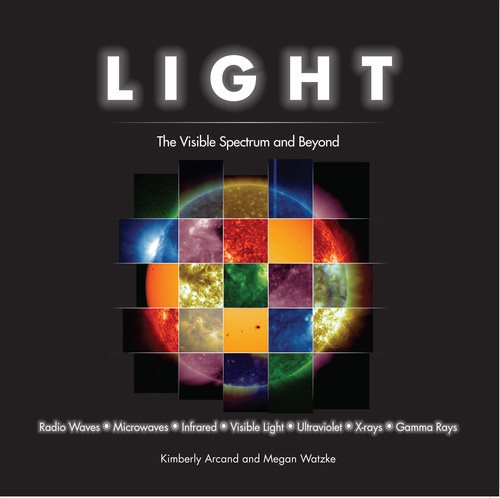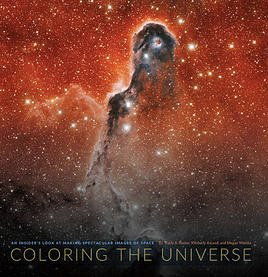 Anyone who loves astronomy and the night sky knows that light is the key. As humans, visible light is the way we see the universe — photons slamming into our eyes. Two new terrific books explore the electromagnetic spectrum and how we see and appreciate astronomical images.
Anyone who loves astronomy and the night sky knows that light is the key. As humans, visible light is the way we see the universe — photons slamming into our eyes. Two new terrific books explore the electromagnetic spectrum and how we see and appreciate astronomical images.
The first is Light: The Visible Spectrum and Beyond by Kimberly Arcand and Megan Watzke (208 pp., hardcover, Black Dog & Leventhal, New York, 2015, $29.99; ISBN 978–1–63191–006–7). This is a beautiful work filled with color imagery that walks readers through the electromagnetic spectrum, radio through gamma rays (and yes, there’s a great section on visible light!).
The book presents dozens of stunning images along with detailed captions and short sections of text explaining various wavelengths. We are treated to galaxies, the cosmic microwave background radiation, moons, planets, star formation, Earth scenes, The Sun, and countless other objects, all arranged into a cohesive explanation of radiation and how we see it.
The authors are expert science communicators who work on the Chandra X-ray Observatory team and have accomplished a magnificent job with this beautiful and absorbing book. Unlike many picture-dominated works, however, it is impressively precise and informative along with the runaway beauty of the images.
Any astronomy enthusiast would be struck with joy while reading through this book.
 Equally as impressive is another new photographic work produced by nearly the same team. Of course for many years amateur astronomers have wondered — sometimes, yes, grumbled — about the image processing done on digital photographs and whether or not the vivid colors they see in galaxies and nebulae are “real.”
Equally as impressive is another new photographic work produced by nearly the same team. Of course for many years amateur astronomers have wondered — sometimes, yes, grumbled — about the image processing done on digital photographs and whether or not the vivid colors they see in galaxies and nebulae are “real.”
And along comes Coloring the Universe: An Insider’s Look at Making Spectacular Images of Space by Travis A. Rector, Kimberly Arcand, and Megan Watzke (250 pp., hardcover, University of Alaska Press, Fairbanks, 2015, $50; ISBN 978–1–60–223273–0).
This work draws on astronomer Rector’s more than 200 images created with the Gemini, Kitt Peak, NRAO telescopes, and others, and confronts the notion of what is real and what may be pushed in color and contrast in astronomical imagery. As with the Light book, the dozens of gorgeous astronomical images herein make a feast for astronomy lovers.
Coloring the Universe begins with an explanation of the differences of the human eye and the capabilities of a telescope, and goes from there. We see not only a history of images in the many color photographs, but also reads a narrative history of how astronomy has unfolded to capture the incredible photos of the universe we now have. Hubble, huge ground-based telescopes, and other orbiting observatories all get recounted so that readers understand the evolution of the astronomy game.
Each of these books is a treasure. Each will make thousands of astronomy enthusiasts very happy this holiday season.
Follow Dave Eicher on Twitter: @deicherstar